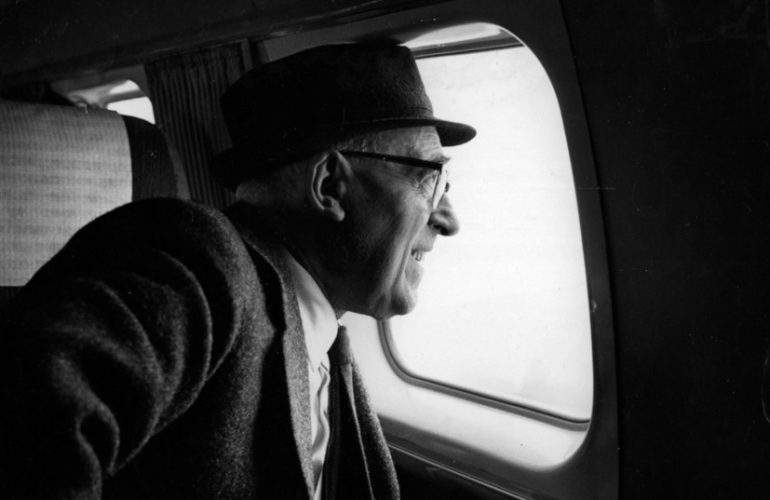Palazzo Magnani dedicates an exhibition to Cesare Zavattini thirty years after his death
On October 13, 1989, just thirty years ago, Cesare Zavattini (Luzzara, 1902 - Rome, 1989), a key figure of Italian neorealism , died, and on this occasion he is being celebrated by an exhibition in Reggio Emilia, at Palazzo da Mosto, entitled Zavattini beyond borders, scheduled from December 14, 2019 to March 1, 2020.
Three decades seem to be a fair amount of time to analyze a character as complex, original and passionate as Zavattini was. To him, in his different guises as a man of cinema, writer, cartoonist, and a character with a strong political commitment, many studies have been dedicated in Italy and around the world. However, one aspect has remained, if not in the shadows, certainly less investigated, and it is the one that the Panizzi Library and theCesare Zavattini Archive have been delving into in recent years: Zavattini’s role abroad, in times, his own, steeped in the climate of the Cold War and ideological contrasts. A role that was crucial in promoting salient aspects of Italian culture of the second half of the twentieth century, and of neo-realism in particular, on the European horizon and more generally on the international scene, thanks to his intense participation in conventions, congresses, conferences, and training courses in decolonized or developing countries, his collaborations with magazines and film co-productions.
The exhibition project is marked by two guiding lines: on the one hand, it investigates the activity carried out in different artistic fields (cinema, literature, painting, etc.), in geographical areas (both in Europe and in the New Continent); on the other hand, it delves into particular themes and events, such as that of travel (e.g., in the footsteps of Van Gogh), peace, relations with the Latin American writer Garcia Marquez and with Jewish cosmopolitan circles.
In the exhibition at Palazzo da Mosto, documentary and iconographic materials will converge, recounting all the activities and network of relationships woven by this eclectic personality: thousands of original papers, typescripts and manuscripts, autograph notes, along with photographs, videos, posters and books.
Enriching the exhibition are some of his inseparable objects, the typewriter, the beret, the travel bag, as well as 150 paintings from the Pinacoteca di Brera in Milan, part of the famous collection of 8X10s that Cesare Zavattini had collected during his meetings with some of the most important artists of the 20th century. Among the many will be on display Giacomo Balla, Antonio Ligabue, Alberto Burri, Enrico Baj, Renato Guttuso, Giorgio De Chirico, Lucio Fontana, Fausto Melotti, Bruno Munari, Claudio Parmiggiani, Gillo Dorfles, Diego Rivera, David Alfaro Siqueiros, Mario Sironi, Alberto Magnelli, and then again Pietro Consagra, Roberto Crippa, Fortunato Depero, Filippo De Pisis, Gianni Dova, Michelangelo Pistoletto, Mimmo Rotella and many others.
The last room of the exhibition itinerary will be dedicated to unpublished shots by one of Italy’s leading photographers, Gianni Berengo Gardin, taken on the occasion of the work re-proposing Cesare Zavattini’s Luzzara in the photographic book Un Paese vent’anni dopo.
To close the exhibition, a conference focusing on Zavattini’s international dimension is scheduled for Saturday, February 29, 2020, in Reggio Emilia in the Aula Magna of theUniversity of Modena and Reggio Emilia. During the initiative, the research completed by the working group of the Zavattini beyond borders project and published in the exhibition catalog will be presented.
For all information you can visit the official website of the Fondazione Palazzo Magnani.
 |
| Palazzo Magnani dedicates an exhibition to Cesare Zavattini thirty years after his death |
Warning: the translation into English of the original Italian article was created using automatic tools. We undertake to review all articles, but we do not guarantee the total absence of inaccuracies in the translation due to the program. You can find the original by clicking on the ITA button. If you find any mistake,please contact us.





























